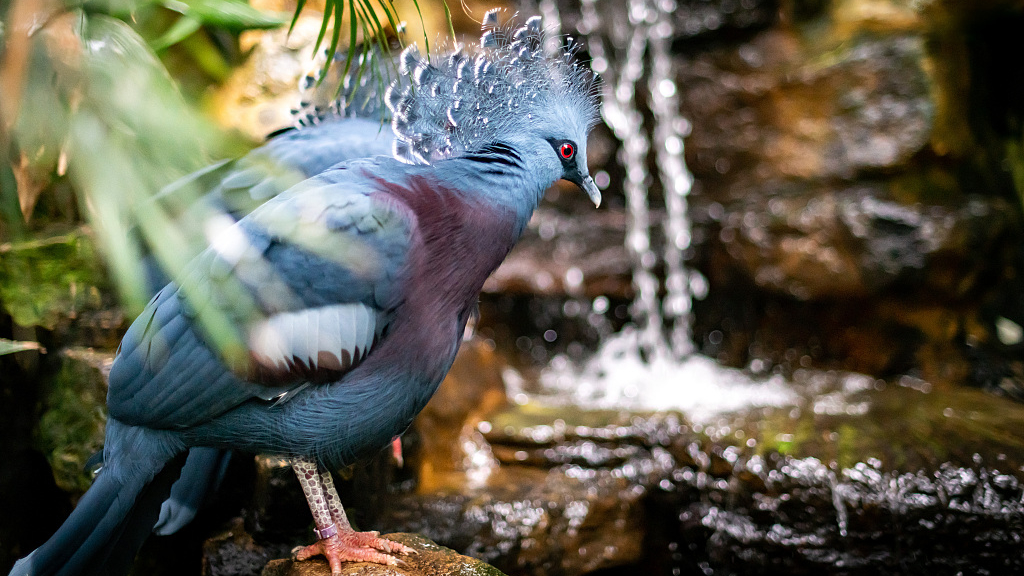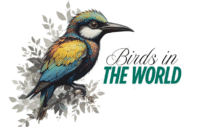The Victoria Crowned Pigeon, a majestic bird adorned with a lacy blue crest and iridescent feathers, strides gracefully through the lowland forests of Papua New Guinea, embodying Oceania’s avian splendor. As one of the largest pigeons in the world, this regal pigeon captivates with its vibrant plumage and serene presence, making it a jewel of the Pacific. Native to New Guinea’s rainforests, it faces challenges from habitat loss but remains a symbol of beauty and resilience. This article explores the Victoria Crowned Pigeon’s biology, cultural significance, and conservation needs, celebrating its role in Oceania’s natural heritage.

The Dazzling Allure of the Regal Pigeon
A Crown of Elegance
The Victoria Crowned Pigeon is a vision of grandeur, with slate-blue feathers that shimmer under rainforest light and a delicate, fan-like crest that crowns its head. Its deep red eyes and subtle maroon chest add to its striking appearance. For example, the crest, unique among pigeons, sways with each step, signaling health and vitality during courtship. This exquisite plumage distinguishes the blue-feathered beauty, earning it admiration from birdwatchers and locals alike in Papua New Guinea.
Habitat in Oceania’s Rainforests
The Victoria Crowned Pigeon thrives in the humid, lowland rainforests of northern New Guinea, favoring swampy areas rich with fruiting trees. It roosts in dense canopies and forages on the forest floor, blending seamlessly with the undergrowth. However, deforestation for logging and agriculture threatens these habitats, pushing the species toward fragmented ranges. Its presence in Oceania’s ecosystems, as explored in our Birds by Region category, underscores the importance of preserving these lush environments.
Behavior and Ecology of the Blue-Feathered Beauty
Courtship and Social Bonds
The Victoria Crowned Pigeon is a social creature, often seen in pairs or small groups, strutting with deliberate grace. Males perform elaborate courtship displays, bowing deeply while fanning their crests and emitting soft, booming coos. For instance, these displays strengthen pair bonds, as the species is largely monogamous. Their gentle vocalizations, which you can learn more about in our Bird Songs and Calls category, add a melodic layer to the rainforest soundscape, enchanting those who hear them.
Fruit-Based Foraging
As frugivores, Victoria Crowned Pigeons feed primarily on fallen fruits, seeds, and berries, using their strong beaks to crack tough shells. They play a vital role in seed dispersal, aiding rainforest regeneration. Their diet also includes small insects, showcasing dietary flexibility. As a result, their foraging habits tie them closely to healthy forest ecosystems, though urban expansion limits their food sources. Their stately foraging, often in shaded clearings, makes them a breathtaking sight for ecotourists.
Cultural Significance of the Ornate Pigeon
A Symbol of Prestige
In Papua New Guinea, the Victoria Crowned Pigeon holds deep cultural value, with its feathers and crest used in traditional headdresses and ceremonies. Local tribes, such as the Huli, revere the bird as a symbol of beauty and status, incorporating its image into dances and art. This reverence elevates the regal pigeon beyond wildlife, linking it to cultural heritage. Its historical significance, akin to extinct species in our Historical Birds category, highlights its role in human stories.
Artistic and Ecotourism Appeal
The Victoria Crowned Pigeon’s ethereal beauty inspires artists and photographers, appearing in vibrant illustrations and wildlife documentaries. Its prominence in ecotourism, particularly in Papua New Guinea’s wildlife sanctuaries, draws global visitors eager to glimpse its elegance. For example, sanctuaries like the Port Moresby Nature Park showcase the bird, boosting local economies. Its visual allure makes it a flagship species for promoting Oceania’s biodiversity, captivating audiences worldwide.
Conservation Challenges for the Majestic Pigeon
Threats to Rainforest Homes
The Victoria Crowned Pigeon faces significant threats from deforestation, driven by logging, mining, and palm oil plantations in New Guinea. These activities destroy nesting sites and food sources, reducing populations. Moreover, hunting for feathers and the pet trade exacerbates their decline. Conservation efforts, detailed by BirdLife Australia, focus on habitat protection and anti-poaching measures. Safeguarding rainforests is critical to ensure the Victoria Crowned Pigeon continues to grace Oceania’s forests.
Captive Breeding and Urban Roles
Captive breeding programs in zoos and sanctuaries offer hope, with successful reintroductions in protected areas. In urban settings, the Victoria Crowned Pigeon occasionally appears in aviaries, delighting city visitors. However, captive populations cannot replace wild habitats, emphasizing the need for forest conservation to maintain the species’ natural majesty.
Why the Victoria Crowned Pigeon Enchants Us
The Victoria Crowned Pigeon is a living testament to Oceania’s wild beauty, with its ornate crest, vibrant feathers, and gentle demeanor. Its presence in New Guinea’s rainforests reminds us of nature’s artistry and fragility. From cultural ceremonies to global ecotourism, this bird bridges human and natural worlds, inspiring awe and action. In conclusion, the Victoria Crowned Pigeon urges us to protect our planet’s forests, ensuring its regal beauty endures. Have you encountered a pigeon or similar bird that captivated you? Share your story in the comments and join our community of bird lovers!
